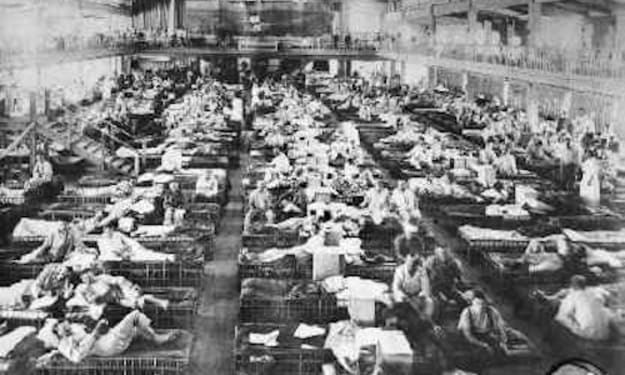Michael Clarke Rockefeller
Murder by Colonial Authorities ** Some conspiracy propositions propose that Michael may have been killed by Dutch social authorities to help him from uncovering sensitive information or to avoid politic complications. still, there is little to no validation supporting this proposition.

** prolusion ** Michael Clark Rockefeller, a member of one of America's flush and utmost influential families, mysteriously faded in 1961 while on an passage in Dutch New Guinea( now part of Indonesia). His exposure has sparked numerous propositions and enterprises, ranging from drowning to being captured by indigenous lines. This essay delves into the background of Michael Rockefeller, the circumstances leading to his exposure, the posterior quest sweats, and the propositions that have surfaced over the times. ** Background
** Michael Rockefeller was born on May 18, 1938, to Nelson Rockefeller, the also- Governor of New York and subsequently Vice President of the United States, and Mary Todhunter Clark Rockefeller. As a heir of the Rockefeller family, Michael had access to unrivaled resources and openings. Despite his privileged parenthood, he developed a keen interest in anthropology and art, particularly fascinated by the racial societies of Oceania. In 1961, after graduating from Harvard University with a degree in history and economics, Michael joined the Peabody Museum of Archaeology and Ethnology's passage to study the Asmat people in Dutch New Guinea. The Asmat, known for their intricate wood busts and rich cultural traditions, lived in a remote and largely unexplored region. ** Circumstances Leading to Disappearance
** On November 17, 1961, Michael Rockefeller and Dutch anthropologist René Wassing were traveling along the southern coast of New Guinea in a catamaran. Their boat capsized in rough waters roughly three long hauls from underpinning. After drifting for some time, Rockefeller, displaying both determination and perhaps despair, decided to swim to underpinning, reportedly saying to Wassing," I suppose I can make it." Wassing was subsequently saved, but Michael was noway seen again.
The news of his exposure transferred shockwaves through the Rockefeller family and the world, herding an extensive quest and deliverance operation. ** Search sweats ** The quest for Michael Rockefeller was one of the most extensive and high- profile deliverance operations of the time. The Rockefeller family, using their influence and resources, coordinated with the Dutch colonial authorities to comb the area. The quest included upstanding surveillance, nonmilitary details, and ground searches, involving original lines and professional quest armies. Despite these total sweats, no trace of Michael was set up. The sanctioned conclusion was that he would presumably drowned or been taken by a crocodile, common in the region's gutters. still, the lack of definitive validation left room for enterprise and fueled various propositions about his fate.
** propositions About His Fate ** Several propositions have surfaced over the times regarding Michael Rockefeller's exposure
1. ** Drowning ** The functionary and utmost straightforward proposition is that Michael drowned while trying to swim to underpinning. The treacherous waters, strong currents, and implicit exhaustion could have overwhelmed him, leading to his death. His body may have been swept down or consumed by marine bloodsuckers
. 2. ** Capture and Cannibalism
** One of the most sensational and controversial propositions is that Michael reached the underpinning but was captured and killed by the Asmat people. Dutch New Guinea was known for its history of headhunting and ritual cannibalism. Some believe that Michael may have been killed in a racial ritual, possibly as revenge for former hassles with social authorities. various reports and claims by missionaries, original lines, and posterior researchers have suggested at this possibility, although no concrete validation has ever surfaced.
3. ** Assimilation ** Another proposition suggests that Michael survived and chose to live among the Asmat people, either freely or as a locked . This proposition is supported by occasional sightings and reports of a white man living in the region. still, these claims are largely anecdotal and leave empirical validation.
4. ** Murder by Colonial Authorities ** Some conspiracy propositions propose that Michael may have been killed by Dutch social authorities to help him from uncovering sensitive information or to avoid politic complications. still, there is little to no validation supporting this proposition.
** Cultural and nonfictional Impact ** Michael Rockefeller's exposure has had a continuing impact on popular culture and anthropology. His story has been the subject of numerous books, filmland, and films. The allure with his fate reflects broader themes of exploration, cultural hassle, and the unknown. Michael's exposure also drew attention to the Asmat people and their culture. The posterior relations with researchers, intelligencers, and anthropologists have proved and saved aspects of Asmat traditions and art, which might have additional remained obscure. ** Recent Developments
** In recent times, renewed interest in Michael Rockefeller's fate has led to further examinations. In 2014, intelligencer Carl Hoffman published" Savage Harvest," a book that revisits the case and argues that Michael was indeed killed by the Asmat people. Hoffman's disquisition, predicated on interviews with Asmat tribesmen and archival records, suggests that Michael's death was part of a ritualistic act of revenge. still, despite these claims, the true fate of Michael Rockefeller remains a mystery.
** Conclusion ** The exposure of Michael Rockefeller is a story that continues to appeal and conspiracy. It's a tale of adventure, cultural hassle, and the enduring mystifications of the mortal experience. While numerous propositions essay to explain his fate, the lack of definitive validation leaves his exposure as one of the most enigmatic events of the 20th century. Michael Rockefeller's heritage, still, extends beyond his mysterious end, as his passion for anthropology and exploration has contributed to a lower understanding and appreciation of the Asmat people and their culture.
About the Creator
Enjoyed the story? Support the Creator.
Subscribe for free to receive all their stories in your feed.





Comments
There are no comments for this story
Be the first to respond and start the conversation.